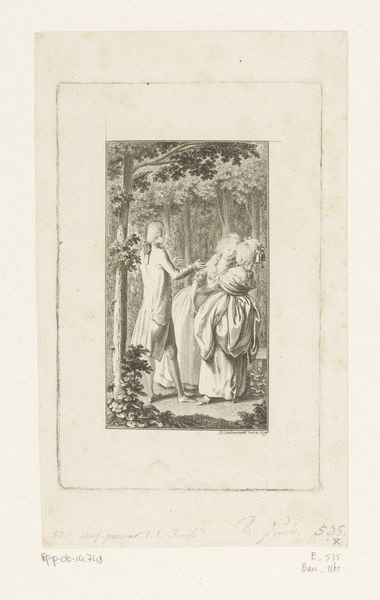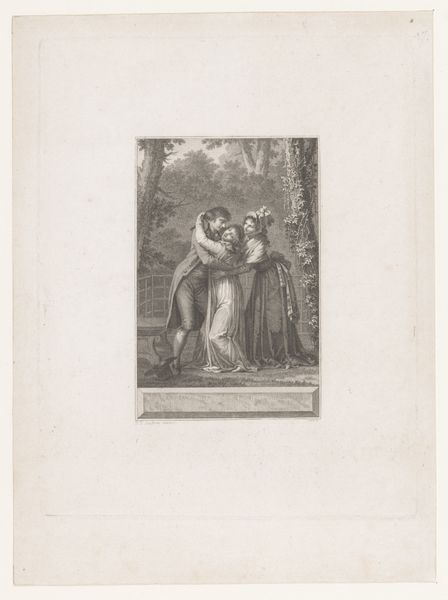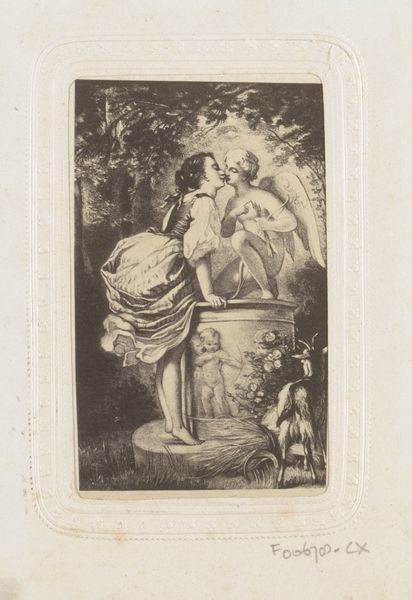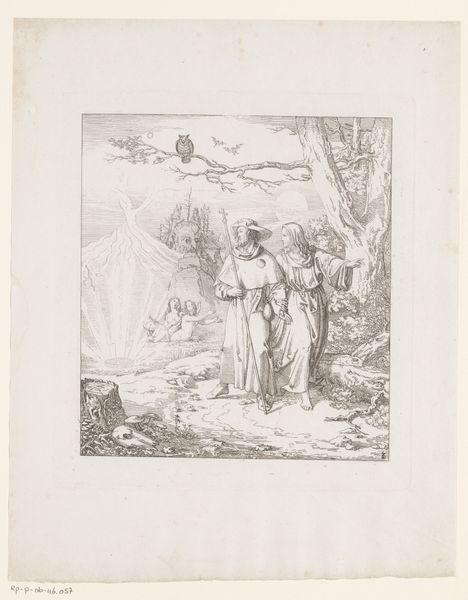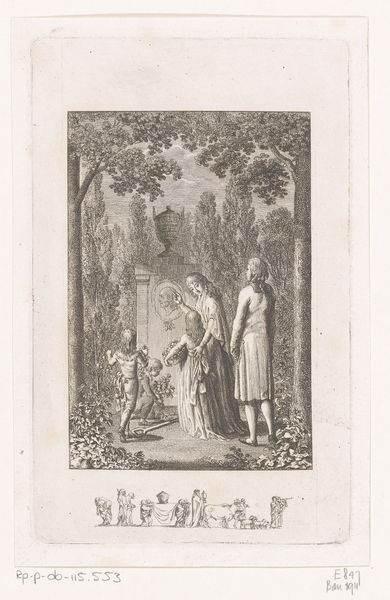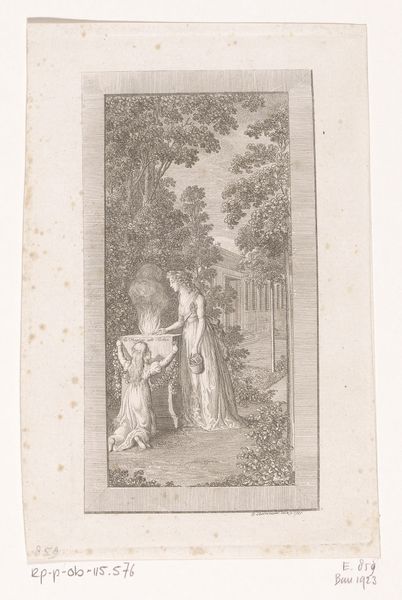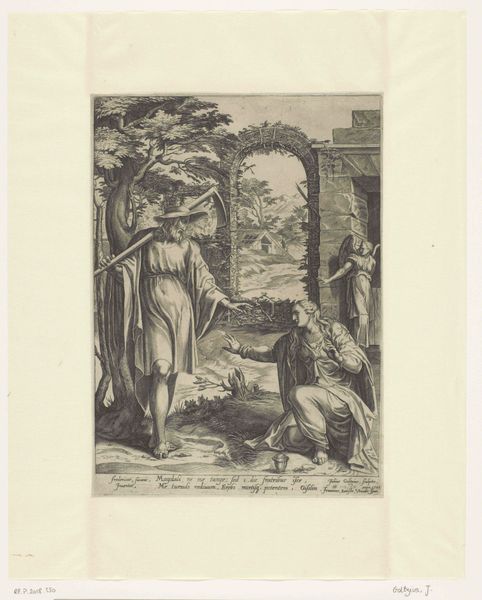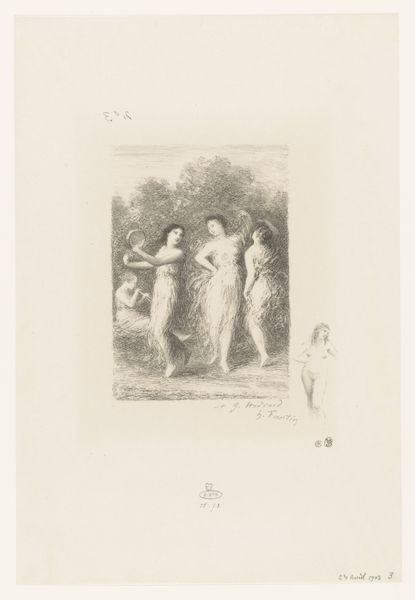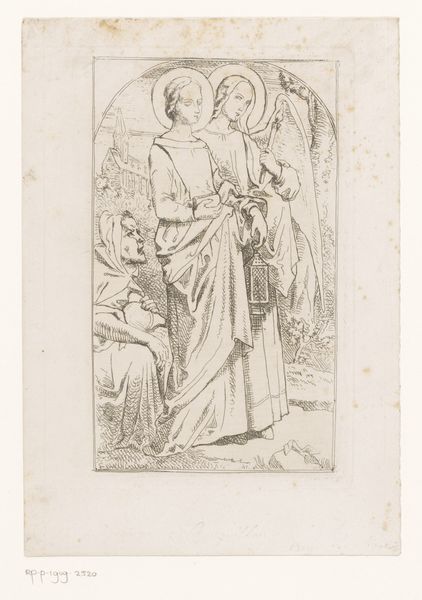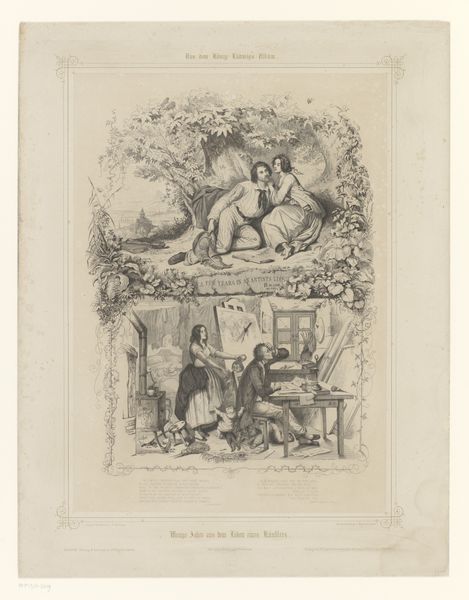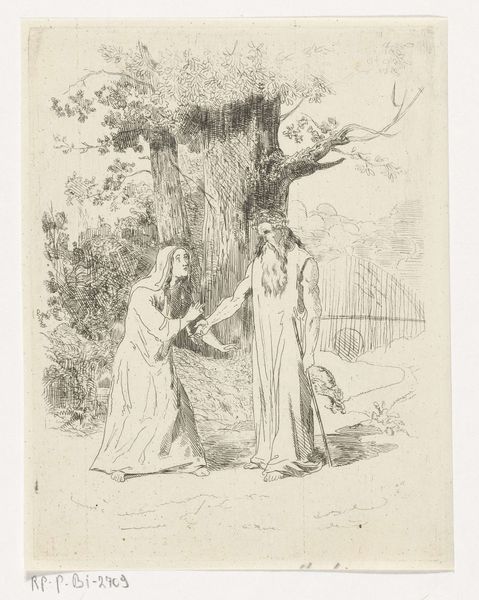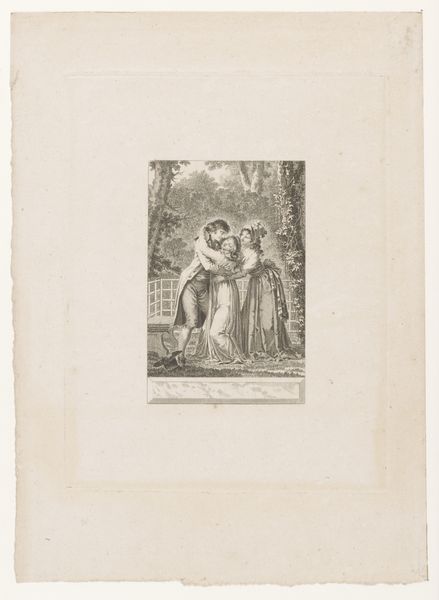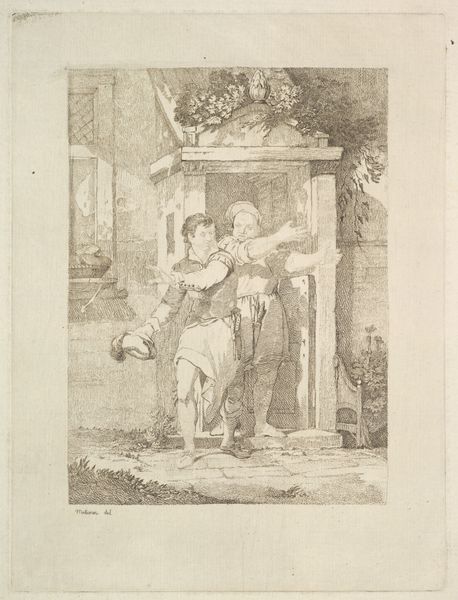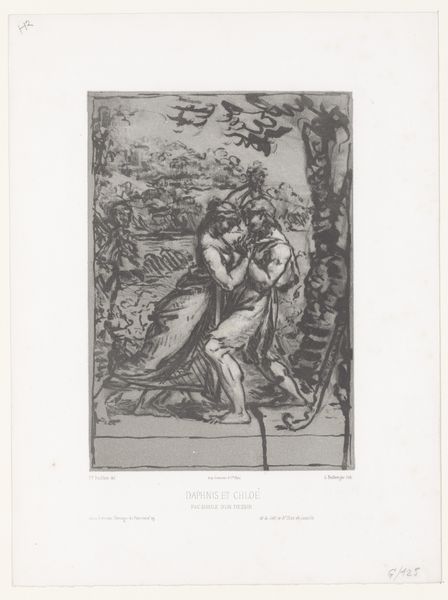
etching
#
narrative-art
#
etching
#
etching
#
figuration
#
romanticism
#
history-painting
Dimensions: height 182 mm, width 134 mm
Copyright: Rijks Museum: Open Domain
Curator: Today we're looking at Heinrich Vianden's etching, "Vrouw van Potifar beschuldigt Jozef," made in 1844. Editor: My first impression is of delicate chaos! The scene feels charged, almost theatrical, with swirling lines giving a sense of urgency. Curator: Vianden's choice of etching really lends itself to the narrative. The incised lines into the metal plate allowed for mass production, making these biblical stories accessible to a wider audience, fostering social commentary through readily available images. Editor: Absolutely. And look at how Potiphar's wife dominates the visual field. The symbol of feminine betrayal, fueled by thwarted desire, is powerful, especially considering the period's constraints on female agency and expressions of desire. Her draped, almost classical dress contrasts interestingly with Joseph's simpler, almost childlike attire, suggesting innocence. Curator: Good point. Think of the materiality of those costumes. Perhaps they were made of simple, locally sourced textiles and garments produced via a guild system in Vianden's time. Consider that versus the imagined opulence and supposed 'purity' that Vianden might be projecting back to the ancient world represented here. It suggests anxieties regarding the contemporary class structures. Editor: Fascinating. Note also the watchful figures overhead. That detail acts as a constant, voyeuristic presence, signifying social surveillance and how people behaved depending on observation during the time period that Joseph represents, with a symbolic judgment from above. Curator: The means of creating the image are very important to keep in mind. These etched prints had an almost democratizing effect for a society starting to come to terms with an emergent middle class in Europe, which Vianden also helped define and portray. Editor: And isn't it striking how timeless and universal this story of betrayal and accusations continues to be? It really emphasizes the visual vocabulary employed to keep this very old narrative accessible. Curator: Exactly. This work serves to show how deeply enmeshed both materiality and iconography become when trying to decode cultural anxieties of an era gone by. Editor: I think that analyzing how images continue to carry a profound psychological, historical weight within any culture is one of art history's strongest qualities.
Comments
No comments
Be the first to comment and join the conversation on the ultimate creative platform.
